Bringing the Cadbury bunny to life: Fin Design + Effects launches mini behind the scenes video
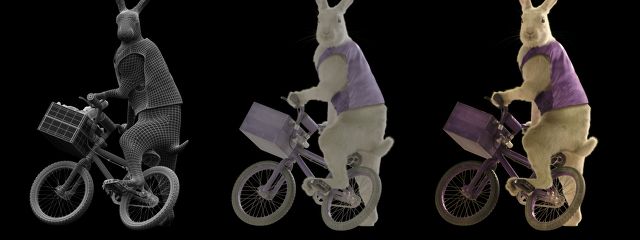 Directed by Michael Spiccia of GoodOil Films and in collaboration with the creative team of Wassim Kanaan, Jon Burden and Matt Gilmour at Saatchi & Saatchi Sydney, Fin Design + Effects was thrilled when asked to bring the Cadbury Easter Bunny to life. Revealing through the story that he does indeed come from the magical place of Joyville.
Directed by Michael Spiccia of GoodOil Films and in collaboration with the creative team of Wassim Kanaan, Jon Burden and Matt Gilmour at Saatchi & Saatchi Sydney, Fin Design + Effects was thrilled when asked to bring the Cadbury Easter Bunny to life. Revealing through the story that he does indeed come from the magical place of Joyville.
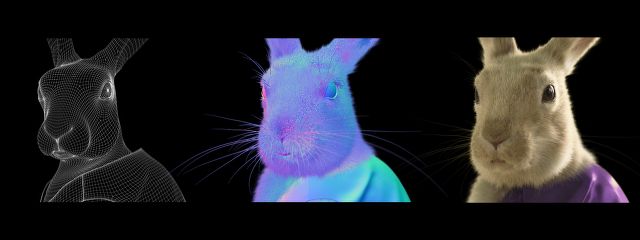 CG supervisor and lead Stuart White, together with VFX supervisor and composite lead, Nick Ponzoni, embarked on a comprehensive R&D phase, in close collaboration with Spiccia to ultimately create the most
CG supervisor and lead Stuart White, together with VFX supervisor and composite lead, Nick Ponzoni, embarked on a comprehensive R&D phase, in close collaboration with Spiccia to ultimately create the most 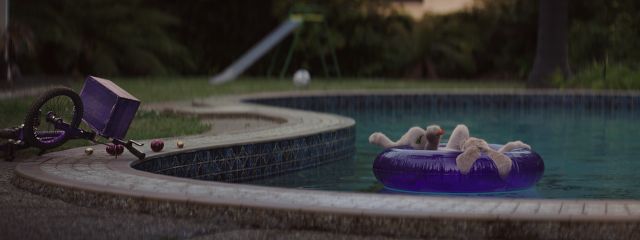 photorealistic computer generated Bunny, which had to appear as though it was practically captured in camera.
photorealistic computer generated Bunny, which had to appear as though it was practically captured in camera.
The look of the bunny was first established, concentrating on the 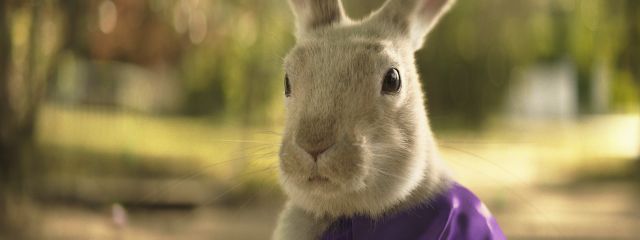 color tone and the appearance of the fur. Setting up an efficient workflow for fur simulation and its rendering was of great importance. As a result of intensive R&D, Fin decided to use the software Yeti, by Peregrine
color tone and the appearance of the fur. Setting up an efficient workflow for fur simulation and its rendering was of great importance. As a result of intensive R&D, Fin decided to use the software Yeti, by Peregrine 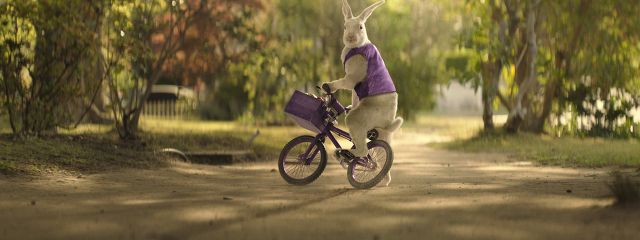 Labs to create the fur texture, combined with the rendering software V-Ray, for ultimate photorealistic results. The motion or animation of the bunny was also of great importance, where Fin worked to find the right balance of having the bunny move in an anthropomorphic way, whilst also staying true to the movements of a real bunny.
Labs to create the fur texture, combined with the rendering software V-Ray, for ultimate photorealistic results. The motion or animation of the bunny was also of great importance, where Fin worked to find the right balance of having the bunny move in an anthropomorphic way, whilst also staying true to the movements of a real bunny.
A detailed previsualization of the whole commercial was created with Spiccia. This served to both verify that the action of the bunny was flowing nicely in the edit and, once filming began, it formed a blueprint to guide the crew through the filming of each shot. In addition to the previz, the on-set crew framed each shot of the imaginary bunny with the help of a stand in prop bike which was pushed through each shot to establish composition, timing and focus marks. For every scene that would eventually contain the digital bunny, Fin’s VFX supervisors filmed a real rabbit pelt draped over the traditional grey ball to serve as an accurate reference point for how real fur reacted under those specific lighting conditions.
Anamorphic lenses were used to film the commercial, contributing a lush cinematic aesthetic to the images. Conversely they also added a huge degree of difficulty to the 3d team’s mission. When combined with detailed cloth simulations for the waistcoat and thick CG rabbit fur, it’s no wonder that some frames of the commercial took over 12 hours each to render.
Ponzoni composited all of the final Bunny elements and environment composites on flame, together with senior compositor Smith. Ponzoni also finalized the grade in-house using both lustre and flame software.
The 3d bunny was brought to life, by Tim Streets (Modeler), Gerard Ommen Kloeke (Rigger), Duncan MacLaren (Animator), Tom Corbett (Fur Specialist / Groomer), Mark White (Pipeline TD) and Stuart White (CG Supervisor / Lead). Ponzoni, using both lustre and flame handled the final composites and grade, together with compositor, Smith. Executive producer Billy Becket led the team.

8 Comments
Awesome work guys!!!!
Why did I need to see a behind the scenes of how an obviously CGI rabbit was made? It’s not 1993.
Fabulous job, the bunny looks great !
dear Why said,
you didn’t have to anything.
I said.
right, it’s not 1993, no one uses the word CGI anymore.
Inspiring. Those people who said the CU of the rabbit was in camera?? Greatest compliment of all. Awesome work guys.
Am I going crazy? Or am I the only one who thinks this is just pain awful.
Fin usual gets it so right. But I’m sorry, this is of a very poor standard.
@boom
Doesn’t VFX cover everything else too… you know like real VFX that happens outside of the computer? But by judging by your perspective you wouldn’t know about that rubbish.
Bottom line: It’s average 3D fur bro. It looks like porridge and it moves like it’s made of rubber.
For a concept that seems to try so hard to be ‘classically crafted’ it is totally reliant on average computer animation.